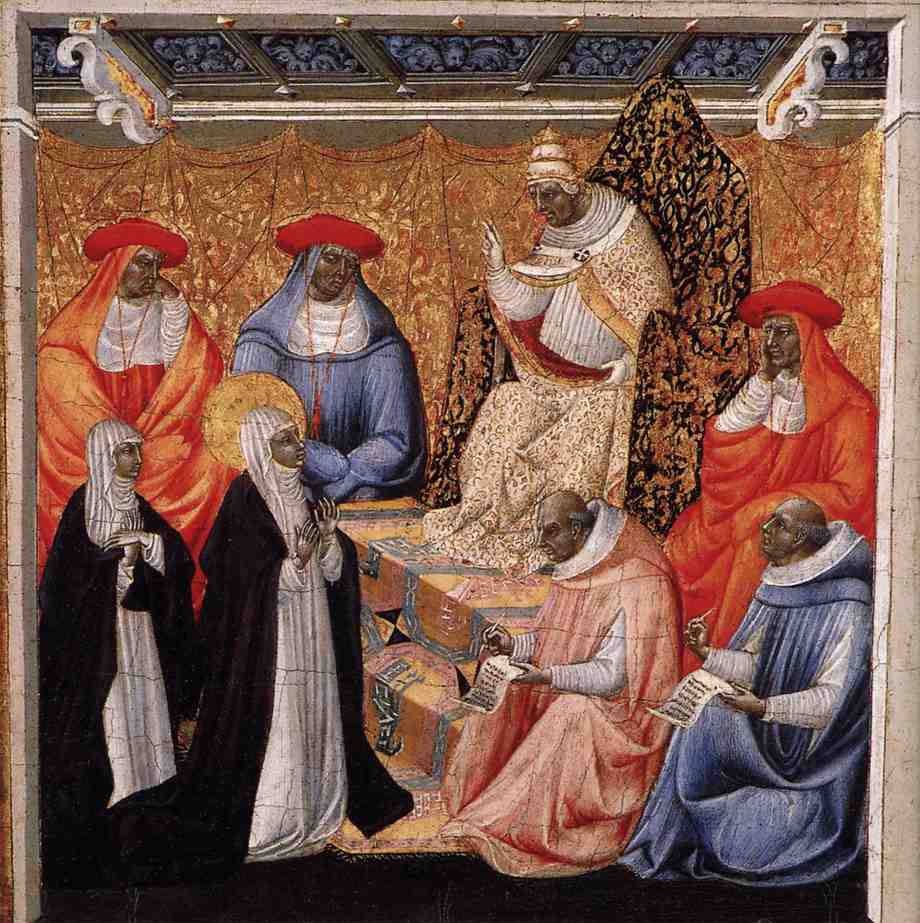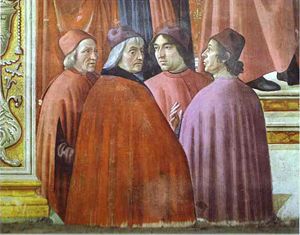 In the late 14th century and after the death of Pope Gregory XI, the college of cardinals met to elect a new pope. The citizens of Rome feared the return to a French Papacy if a Frenchman was elected. Not only that, the cardinals would open themselves up to attacks if they didn't choose an Italian. They safely elected Bari, who was crowned Pope Urban VI on Easter Sunday.
In the late 14th century and after the death of Pope Gregory XI, the college of cardinals met to elect a new pope. The citizens of Rome feared the return to a French Papacy if a Frenchman was elected. Not only that, the cardinals would open themselves up to attacks if they didn't choose an Italian. They safely elected Bari, who was crowned Pope Urban VI on Easter Sunday.Urban threatened the cardinals, advising them that he would fill the college with as many Italians as possible, thereby eliminating the French majority. A manifesto was presented by the cardinals stating Urbans election was null and void. The French then elected Clement VII and returned to Avignon. Since Urban remained in Rome, this created the Great Schism, which created new thoughts on state and religion and a rise of the conciliar movement, a decline of the prestige of the church, and a new theological framework.
A Rise in Conciliarism Causes A Decline of the Church
Marsiglio of Padua denied temporal authority and was subject to spiritual authority, stating the church should adhere to spiritual functions, and only that. Final authority would rest in the hands of the general church council. This theory led many to Conciliarism, a belief that a general council could end the schism and reform the church. The calling of the council was a difficult task until Holy Roman Emperor Sisigmunds efforts. He formed a new ecumenical church that met to end the schism, disposing of all 3 popes and electing Pope Martin V, ending the schism.This led to the declining prestige of the church, especially the papacy. The Schism had greatly aggravated the financial abuses during the Avignonese papacy and two systems of administration for taxes had been implemented. In addition, the faith of all Christians had been damaged, especially considering that the line of popes deemed each other the Antichrist. To make matters worse, during the Black Death parish priests fled , thereby failing to provide spiritual comfort.Family chapels were formed that signified the importance of purgatory, therefore they created a more mechanical path to salvation.
Pilgrimages once again became popular and contributions without the assistance of clerics reflected the weakening of the institutional church. Citizens became more active in their own salvation, eve
 n looking to mysticism to experience a oneness with God. In addition, Eckharts movement on the soul and its salvation took on a new form of Modern Devotion, founded by Groote. Groote gained a following, which later was named the Brothers of the Common Good.
n looking to mysticism to experience a oneness with God. In addition, Eckharts movement on the soul and its salvation took on a new form of Modern Devotion, founded by Groote. Groote gained a following, which later was named the Brothers of the Common Good.The New Vision
The theological framework after the Great Schism was questioned by Thomas Aquinas, whose faith wasn't widely accepted, however it was kept within a niche of scholastic thought. Additionally, William of Occam simply believed that if you couldn't see it, it wasn't real. There was no belief in a higher supreme being and the truths of religion can only be seen by an act of faith. Occam's beliefs, although controversial, led to the development of physical science by using analysis.
Although the Great Schism had a confusing and tense beginning, it created some evolutionary aspects of scholastic thoughts, as well as creating a more family oriented church setting where people could reach salvation without the assistance of the institutional church. In all actuality, one mistake or error led to more discovery.Also check out:
The End of the Great Schism and Its Affects on The Renaissance Papacy








